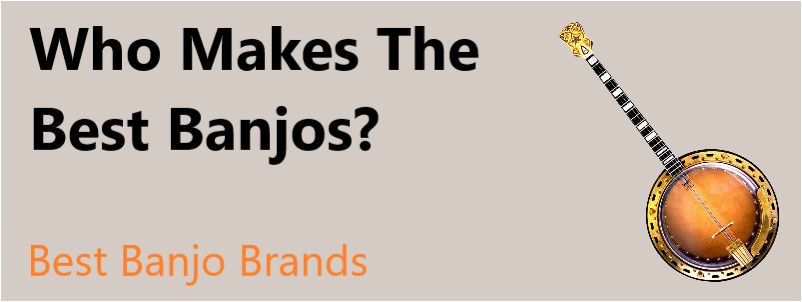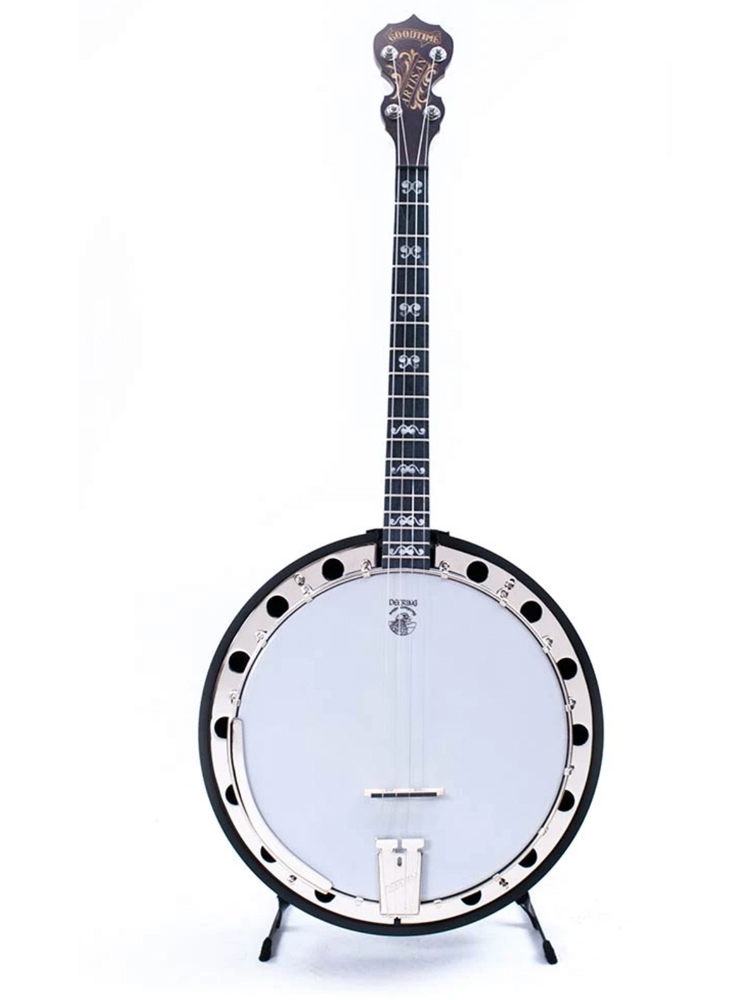Understanding Banjos
Are there different kinds of banjos?
Yes! There are various different banjos available in a range of styles and shapes. In fact, that’s part of what makes finding the perfect choice such a complicated process. Let’s quickly go over the different kinds of banjos so that you can decide which style will work best for your needs.
The 5-String Banjo
Probably the most popular and widely used type of banjo, 5-string banjos have standard fretboards and let you play 5 strings. Notably, they feature that 5th highly pitched rhythm string that is often used to give banjos that twangy rhythmic sound. These banjos are commonly used to play various styles of Indie, Rock, Folk, Jazz, Blues, Bluegrass, and Country Music. Really, if you want to play the banjo in its original format, a 5-string banjo is your best option.
The 6-String Banjo
These banjos can be used to substitute 4-string style banjo playing, for Dixieland music, and are particularly helpful if you need to add tonality to an acoustic ensemble. They’re a lot like 5-string banjos, but with a bit more range. However, these banjos are also a bit harder to play than 5-string banjos. Also, 6-string banjos can have “double-strings” that give them an even more in-depth octave sound and feature 12-strings.
Plectrum or Tenor 4-String Banjos
Most 4-string banjos are tuned in ADGC (counted from the bottom string up) and are usually played with a flat pick. Plectrum banjos can work well for Celtic and Folk music as well. Tenor banjos usually have shorter necks and fretboards than other types of banjos.
Standard 4-String and Mini Banjos
Also used for Celtic music, there are 4-string banjos available that are not technically Plectrum banjos. These variants are often tuned an octave lower than a mandolin in EADG. They’re great for Dixieland-style music. Mini banjos also exist and have high bright tones.
Banjo Hybrids
Finally, there are ukulele and mandolin hybrid banjos. These are great for transitioning from either a ukulele or mandolin to a banjo. Other hybrids also exist with unique setups that are similar to banjos but played a bit differently. These instruments are unique and fun to play and can be used to add range to any number of musical styles.
Banjo Makers:

Let’s get into specific banjo makers. There are certainly a lot of banjo brands to choose from. The most notable banjo brands include Deering, Washburn, Epiphone, and Fender.
Opinions on banjo makers differ, so we can’t conclusively state who makes the ideal banjos. However, all four of the above makers are at the top of the list.
Also, many agree that Deering banjos rank at the very top. Deering banjos are made with premium materials and tend to create an enchanting and unforgettable sound. Below, we will go over some of the most highly-rated banjo makers in-depth so that you can decide for yourself what banjo brand you should choose.
| ||||||||||||||||||||
If you are looking for more information on the banjo brand read our Best Banjo Brands guide.
What is the best banjo for a beginner to purchase?
Now that you know what kinds of banjos are out there, what style should a beginner player use? Well, the most ideal banjo for someone learning to play is probably a standard 5-string banjo. This is the most common format of the instrument and will allow you to learn a better range and hone your skills.
Then, you will already be equipped to play most other banjo styles. Or, if you want to improve your skills after learning to play a 5-string banjo, you can easily start learning how to play a 6-string or 12-string banjo.
As far as features go, the best starter banjos will be easy to play, well-made, and have a good acoustic sound. You probably won’t need an electric-acoustic banjo if you’re just starting out. It will be better to choose something with a rich acoustic sound.
You can always add a pickup to your banjo later or purchase another instrument if you’ll be playing frequently on stage. Also, a good beginner banjo will have a design that works well for you as an individual.
For example, if you want to play while traveling, there are open-back banjos available that have lightweight designs. Also, 5-string parlor banjos are great for kids learning how to play because they’re smaller and have shorter necks. Generally speaking, a beginner banjo should have a standard 5-string setup and a design that you feel will enhance your ability to learn and keep you enthusiastic about practicing.
• What materials are banjos made of?
Banjos can be constructed using various materials. Generally, they’ll implement different kinds of wood and metal. The body of a banjo, or “pot”, will usually have a circular rim made of a fine wood like Maple or Mahogany. However, rims can be made of metal as well.
The tension head and neck will almost always be made using some type of fine hardwood.
Nickel, pearl, silver, and even gold have been known to be used for some of the metallic components of a banjo, especially inlays, engravings, and tails. Then, the tuning pegs will often be made with acrylic, metal, and sometimes premium materials like Ivory, Ebony, or Jade. Ebony inlays are common in older banjos.
The drum head of the banjo used to be made of animal skin, but today is made using synthetic materials and plastics.
• What strings should be purchased for a banjo?
The strings you choose for your banjo can have an enormous impact on how it will play. Strings can influence tone, playability, and resonation. There isn’t a specific set of strings that will be best, but Elixir Strings are a real crowd-pleaser.
To choose the right strings, first look at your banjo setup. How many strings will you need? Each string may be made of different materials and designed to go in a specific order
Specific strings are designed for specific banjos, like 5-string, 6-string, plectrum, and hybrid variants. That way, they can match the neck length and tailpiece setup.
Strings can also be made of various materials. These materials include nickel-plated steel, phosphor bronze, stainless steel, and poly web wrapped strings. Phosphor bronze strings make warm tones, stainless steel strings have clean tones and corrosion resistant, and nickel-plated strings offer strong projection and feel smooth.










